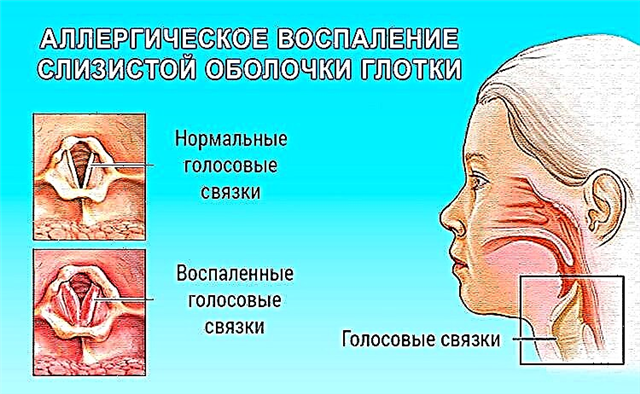Inflammatory diseases of the ear structures, which otolaryngologists call otitis media, are a group of diseases united by the localization of pathological changes in the area of the outer, middle or inner ear. Otitis media are often caused by infectious agents of a viral, bacterial or fungal nature, can develop in a limited area of the anatomical structure of the ear or affect its entire area. Often there are combined processes, the occurrence of complications against the background of incorrect, untimely treatment or its absence. Congestion and pain in the ear is not always taken seriously and can be regarded as an additional sign of SARS. Patients need to know what otitis media is, the symptoms of which should be the reason for seeking medical help.
Classification
To understand how otitis media is manifested, it is necessary to imagine what form of the disease is in question. Otitis media is an inflammatory lesion of the ear, however, the symptoms that will be noted by the patient and the doctor depend on the specific location of the pathological changes. The main options for otitis media can be presented in the table:
| Disease form | The nature of the flow | Most likely pathogens |
| Outer | Acute, chronic. | Bacteria, pathogenic fungi, viruses. |
| Average | Acute, chronic. | Bacteria, pathogenic fungi, viruses. |
| Interior | Acute, chronic (sluggish diffuse). | Bacteria, viruses. |
It is also customary to refer to otitis media as dermatitis, perichondritis, erysipelas and herpetic lesions of the outer ear. In the classification, they stand out as separate forms - this is due not only to the etiology, but also to what symptoms of inflammation in the ear are present in the patient.
It should be remembered that combined forms of otitis media can occur - for example, with damage to the middle and outer ear at the same time.

Otitis externa
Diseases of the external ear are distinguished by a variety of options and manifestations. Symptoms for otitis media are determined by the nature of the course, the prevalence of the lesion. Otitis externa can be accompanied by pain syndrome, which is most pronounced with limited purulent inflammation. How does otitis media begin in adults? It is advisable to describe the signs of the most common forms:
| Limited (furuncle located in the external auditory canal) | The first signs of otitis media are fever and pain, prone to intensification. In addition to the ear, it also hurts the area of the teeth, the entire half of the head and even the neck on the affected side. Patients note an increase in pain during chewing, talking, therefore, they try to limit the mobility of the jaw. The pain also becomes worse when the tragus is pressed or the auricle is pulled back. There may be several boils. With a shallow location, the boil is visible even without the use of special tools. Patients complain of soreness and swelling at the base of the ear. The general condition depends on the degree of intoxication. Patients feel weakness, weakness, fever, chills. The state of health improves after the resolution of the process and the beginning of the discharge of pus. Hearing in patients remains normal. |
| Diffuse | Patients complain of itching and burning sensation, irritation in the ear, the intensity of which can be different. The pain is present, however, it is not as pronounced as in the limited form. The pressure on the tragus increases the pain. The lumen of the external auditory canal is filled with pus. The purulent masses are dense, mixed with the epithelium, have a mushy consistency, and an unpleasant odor. Areas of ulceration covered with granulations may appear. Diffuse otitis media is not characterized by a deterioration in auditory function, however, some authors mention a possible decrease in hearing acuity. |
| Erysipelas (erysipelas) | There is a burning sensation, the skin of the auricle turns red and swells - and the changes extend even to the earlobe. The affected area has clear boundaries, sometimes extending beyond the outer ear. The clinical picture may be supplemented by the appearance of vesicles filled with serous fluid (bullous erysipelas). Trying to touch your ear is painful. The general condition changes - there is a fever (39–40 ° C), chills, weakness, lack of appetite, headache. The hearing remains unchanged. |
| Perichondritis (inflammation of the lining of the cartilage) | The symptoms of otitis media in adults have a peculiarity: the earlobe is not affected. There is pain of a pulsating nature in the area of the auricle, an increase in size and smoothing of the contours, tuberosity, pronounced edema. The patient is worried about weakness, fever, chills, lack of appetite, headache, pain in the neck. The pain syndrome persists even after taking analgesic drugs. |
With the flu, hemorrhagic otitis media may occur, characterized by the presence of bubbles with hemorrhagic contents. The symptoms of otitis media appear against the background of the clinical picture of ARVI.
With late treatment of perichondritis, the auricle can irreversibly change its shape.
Acute otitis media
Ear inflammation, the symptoms of which are observed in the middle form of otitis media, can occur after the infection penetrates transtympanally (tympanic membrane injury). In case of infection by tubular (tubal, through the auditory tube), signs of otitis media in adults appear after the development of ARVI or bacterial respiratory infection.
With serous otitis media, the patient is worried about:
- hearing impairment, noise in the ear;
- sensation of "splashing" when trying to change the position of the head;
- pain sensations of varying intensity.
Fever is usually subfebrile or none at all.
Symptoms of ear inflammation in adults with a purulent form are determined by the stage of the course. In the initial period, pus remains within the boundaries of the tympanic cavity: the greater its amount, the stronger the intracavitary pressure - and hence the pain. The patient is worried about the following symptoms of otitis media:
- Weakness, fever, headache.
- Feeling of fullness (stuffiness), noise in the ear.
- Earache (described as throbbing, stitching, shooting).
- Irradiation of pain in the area of the temple, jaw, neck.
- Intensification of pain in the evening, night hours.
- Hearing impairment on the affected side.
 The patient's condition improves with the onset of otorrhea. The body temperature decreases, the pain subsides - both local in the ear area and headache - these are favorable signs of otitis media in an adult. Spontaneous perforation of the tympanic membrane is a necessary step in resolving the pathological process. It is possible to initiate perforation by surgical intervention - an incision or puncture, which ensures an unobstructed outflow of pus. Suppuration continues for several days, while purulent masses usually do not have a pronounced unpleasant odor, as in diffuse external purulent otitis media. Hearing is still impaired.
The patient's condition improves with the onset of otorrhea. The body temperature decreases, the pain subsides - both local in the ear area and headache - these are favorable signs of otitis media in an adult. Spontaneous perforation of the tympanic membrane is a necessary step in resolving the pathological process. It is possible to initiate perforation by surgical intervention - an incision or puncture, which ensures an unobstructed outflow of pus. Suppuration continues for several days, while purulent masses usually do not have a pronounced unpleasant odor, as in diffuse external purulent otitis media. Hearing is still impaired.
In the reparative, or recovery stage, the patient notes the return of hearing, the absence of fever and weakness, the cessation of pus.
In adults, the symptoms of otitis media usually correspond to the classic picture familiar to medical practitioners. However, in some cases, if the tympanic membrane is not perforated, the accumulated pus remains inside the tympanic cavity. It has a viscous consistency and can provoke the development of adhesive otitis media - a disease in which adhesions form, the mobility of the components of the sound-conducting system of the ear is disturbed.Adhesive otitis media is an extremely unfavorable complication of acute purulent otitis media, since it is manifested by persistent progressive hearing impairment.
A sluggish inflammatory process may also occur - signs of otitis media include only local manifestations, general symptoms (high temperature, severe weakness, etc.) are not pronounced, which contributes to the patient's confidence in the absence of dangerous disorders, late seeking medical help.
Chronic otitis media
Symptoms of otitis media in an adult with a chronic form are characterized by alternating periods of remission and exacerbations - often for many years. How to identify otitis media? One of the main diagnostic criteria is the discharge of pus for more than 6 weeks (even in a meager amount). Each of the forms of the disease is accompanied by a number of symptoms:
| Mesotympanitis | Lesion of the mucous membrane of the middle and lower part of the tympanic cavity. Relatively benign course. | Suppuration, hearing impairment. During an exacerbation, the clinical picture is complemented by complaints of ear pain, dizziness, and fever. |
| Epitympanitis | All parts of the tympanic cavity are affected, while not only the mucous membrane is involved in the process, but also the bone. The course is considered malignant. | The patient is worried about the presence of signs characteristic of mesotympanitis, as well as headache, dizziness, and an unpleasant odor of discharge. |
Among the complications of epitympanitis is cholesteatoma - a formation that destroys bone.
Cholesteatoma consists of epidermal layers and cholesterol, has a dense membrane. The destruction of the bone occurs primarily under the pressure of the formation; in addition, the cholesteatoma secretes enzymes that are able to lyse (dissolve) bone tissue. Intracranial complications become the consequence.
Labyrinthitis
Labyrinthitis is an inflammation of the inner ear. The infection penetrates from the middle ear cavity, in a hematogenous way, as a result of trauma. Labyrinthitis can develop in patients with meningitis - and, as a rule, there is a bilateral lesion.
There are several forms:
- serous;
- purulent;
- necrotic.
The necrotic form is typical for patients with tuberculosis, scarlet fever, measles; is extremely rare. Labyrinthitis is also divided as acute and chronic, limited and diffuse.
In the acute course of a purulent and serous form, symptoms of otitis media of the inner ear are distinguished as:
- Dizziness with nausea and vomiting.
- Imbalance when walking.
- Noise in the ear, hearing impairment.
The outcome of acute diffuse purulent labyrinthitis is hearing loss on the affected side.
Signs of otitis media in acute form of the disease appear suddenly. Body temperature can be subfebrile, in some patients it remains normal. In chronic labyrinthitis, there is a gradual dysfunction of the inner ear.



